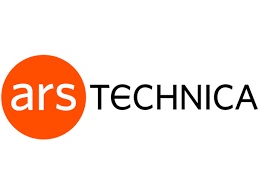Ars
Technica is a website covering news and opinion in technology, science,
politics and society, created in 1998 by Ken Fisher and John Stokes. It
publishes news, reviews and guides on issues such as computer hardware and
software, science and technology policy and video games. Many of the site's
authors are postgraduates and some work for research institutions. Articles on
websites are written in a less formal tone than in traditional magazines.
Ars
Technica was privately owned until May 2008, when it was sold to Condé Nast
Digital, the online division of Condé Nast Publications. Condé Nast, along with
two others, bought the site for $25 million and added it to the company's Wired
digital conglomerate, which also includes Wired and formerly Reddit. Employees
mostly work from home and have offices in Boston, Chicago, London, New York
City and San Francisco.
Ars
Technica's operations are funded primarily by online advertising, and it has
offered a paid subscription service since 2001. The website generated
controversy in 2010, when it experimentally barred readers who used ad-blocking
software from viewing the site.
History
Ars
Technica was founded in 1998, when founder and editor-in-chief Ken Fisher
announced his plans to launch a publication dedicated to technology that would
cater to "alpha geeks": technologists and IT professionals. Kane's
vision was to produce a publication with a simple editorial mission: to be
"technically savvy, up-to-date and more fun" than what was currently
popular in space. In the years to come, Ars Technica will be the one-stop
destination for technology news, technical policy analysis, analysis of the
latest scientific advances, gadget reviews, software, hardware, and almost
everything found between the layers, with a stellar contribution from an
unparalleled editorial staff. Became a reliable source. of silicon.
Ars
Technica innovates by listening to its core readers. Readers demand a
dedication to accuracy and integrity, tempered by a desire to leave the futile,
click-bait bait of every day to the side. The result is something unique: a
unique marriage of detail and depth in technology journalism. By 2001, Ars
Technica was regularly producing news reports, op-eds, and the like, but the
company regularly stood out from the competition by providing lengthy
thought-pieces and in-depth explainers.
And
thanks to its readers, Ars Technica also completed many industry-leading steps.
In 2001, Ars launched a digital subscription service, at a time when such
things did not exist for digital media. Ars was also the first IT publication
to begin covering Apple's resurgence, and the first to draw on the analytical
and cultural links between the worlds of high tech and gaming. Ars first began
selling its long form content in digitally distributable forms, such as PDFs
and eventually e-books (again, starting in 2001).
However,
the editorial team at Ars did not notice the innovation of journalism. Long
before commercial "blogs" appeared on the scene, Ars claimed to have
reinvented journalism by combining opinion, analysis, and straight-forward
reporting into one editorial product. Prior to this the company pursued the
ideals of transparency and community. These same ideals have kept the company
moving forward since its birth, and readers can expect more in the future.
Ars
Technica was founded in Cambridge, Massachusetts. Among those involved in Ars
Technica in its infancy was John Stokes, Ars Technica's co-founder and noted
CPU editor for the first 12 years (John also served as deputy editor from
2008–2011). Eric Bangman, co-founder and managing editor, joined the site
during its early years and remained in the thick of the Ars Technica newsroom.
Acquired
in 2008 by Condé Nast's parent company Advance, Ars Technica has offices in
Boston, New York, Chicago and San Francisco. Today, Ars Technica serves as
Condé Nast's only 100% digitally original editorial publication.
Revenue
The
cost of operating Ars Technica has always been primarily funded by online
advertising. Originally controlled by Federated Media Publishing, selling
advertising space on the website is now managed by Condé Nast. In addition to
advertising online, Ars Technica has sold subscriptions on the website, now
named Ars Premier Subscriptions, since 2001. Subscribers are not shown ads, and
receive benefits including the ability to view featured articles, post in
certain areas of the Ars Technica forum, and participate in live chat rooms
with notable people in the computer industry. To some extent, revenue is also
collected from content sponsorship. A series of articles about the future of
collaboration was sponsored by IBM and the Exploring Datacenter section of the
site is sponsored by data-management company NetApp. In the past, Ars Technica
collected shared revenue from affiliate marketing by advertising deals and
discounts from online retailers, and from the sale of Ars Technica-branded
merchandise.
Frequent
Asked Question (FAQ)
1.
What does Ars in Latin mean?
Ans:
- The most common and significant caveat made regarding the saying is
that "art" (Latin: ars, translating Ancient Greek: τέχνη tékhnē)
originally meant "technique, craft" (as in The Art of War), not
"fine art".
2.
Is Ars Technica free?
Ans:
- Features may change or be removed at any time. You are free to cancel at any
time. Note that use of the Ars Technica website is free, and a
subscription is not needed to access the site or its public content.
3.
What does Ars Technica stand for?
Ans:
- Art of technology












0 Comments